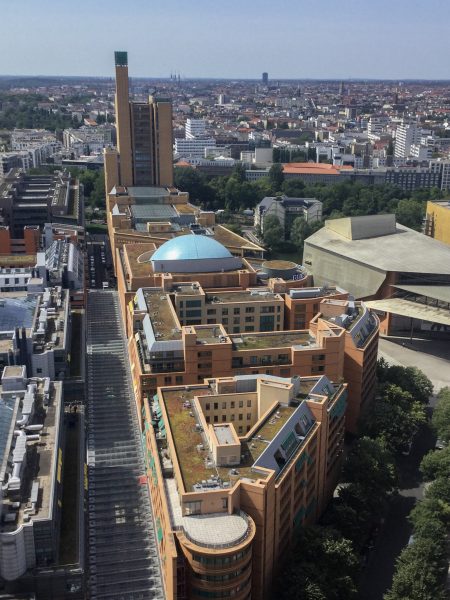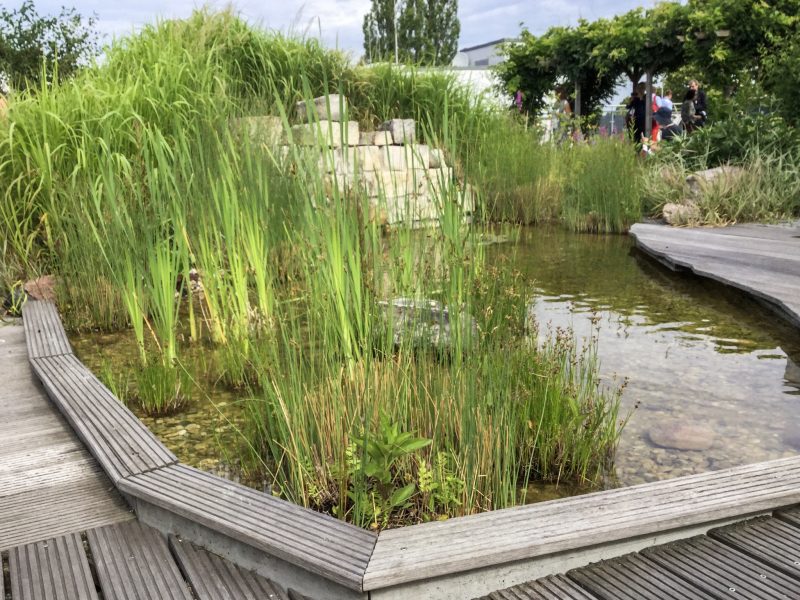Green roofs can help to reduce both storm water volume rate of run off entering the drainage system. Therefore green roofs have an important role to play in the urban realm. As with other green infrastructure interventions. they can help provide resilience in cities, especially as cities are increasingly experiencing the increased likelihood of floods.

Green roofs are source control – the start of Sustainable Urban Drainage System (SUDS)
Storing and holding back the water at roof level means green roofs are a source control mechanism. As there is limited space at ground level in dense urban areas, green roofs are an ideal solution.

In fact a green roof replicates the natural landscape, allowing water to infiltrate the vegetation, substrates and engineered drainage layers of the green roof.
- A green roof will typically intercept the first 5mm and more of rainfall providing interception storage. The amount will be dependent on the depth and type of substrate in the green roof system
- In the summer a green roof can typically retain between 70%-80% of the run off
- In Germany between 40%-100% of rainfall can be retained – dependent upon the season. 75% of rain falling on extensive green roofs can be retained in the short term and up to 20% can be retained for up to 2 months.
- As rainfall events become longer or more intense, the positive effect of a green roof remains. This is because there is still a significant reduction in peak run off rates
- This increase in the ‘time of concentration’ means a green roof will be beneficial throughout a wide range of rainfall conditions
In the light of this incorporating a green roof into new development, there will be a reduce in the amount and cost of the overall drainage infrastructure required to serve that development.

Run off Co-efficients for green roofs
As can be see from the table below green roof types have differing co-efficients. The table is abridged table from the FLL – the German Guidelines for Green Roofs. The UK green roof code is based on the FLL.
| Type of Green Roof | Depth [mm] | Vegetation | Water Retention Annual Average [%] | Coefficient |
|---|---|---|---|---|
| Extensive | 20-40 | Moss/sedum | 40 | 0.6 |
| - | 40-60 | Sedum/Moss | 45 | 0.55 |
| - | 60-100 | Sedum/Moss/Herbs | 50 | 0.5 |
| - | 100-150 | Sedum/Moss/Grass | 55 | 0.45 |
| - | 150-200 | Grass/Herbs | 60 | 0.4 |
| Intensive | 150-250 | Lawns/Shrubs | 60 | 0.4 |
| - | 250-500 | Lawns/Shrubs | 70 | 0.3 |
| - | 500+ | Lawns/Shrubs/Trees | 90+ | 0.1 |
Blue roofs are also a solution for storing water. Green roofs, however, can be combined with blue roofs. In fact the green-blue roof is a better solution has it provides a wider range of benefits to the urban realm.